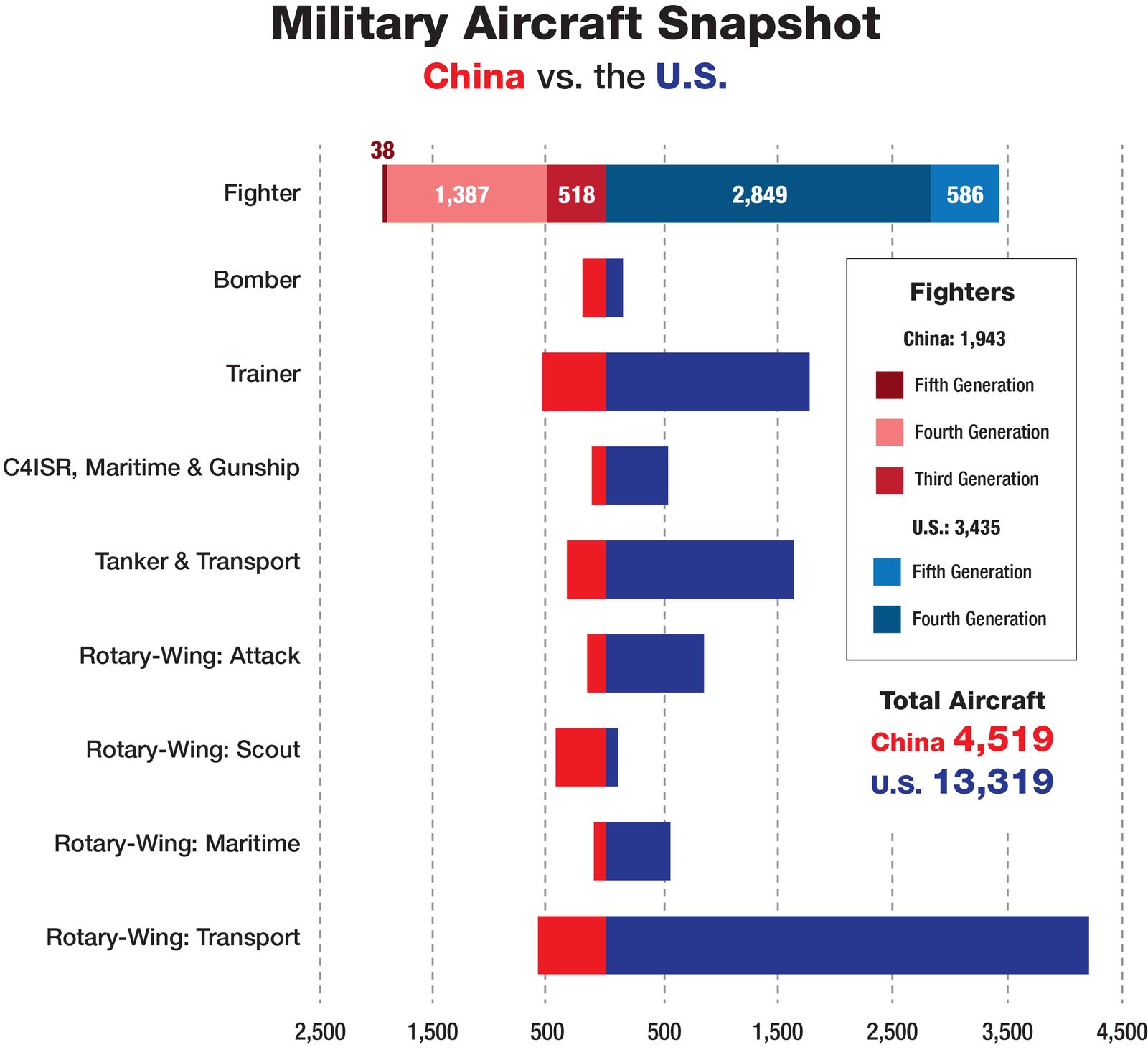4 avril 2023 | International, Autre défense
Macron sends $438 billion military budget plan to French parliament
Gradual increases would see the 2030 annual defense budget top €60 billion, almost double from 2017.
30 juin 2020 | International, Aérospatial
What is the ratio of military aircraft between the U.S. and China?
Jen DiMascio, Aviation Week Executive Editor, Defense and Space, responds:
The U.S. military operates 13,319 aircraft—about three times as many manned aircraft as the Chinese military, which operates 4,519. But the ratio is not even across all types of aircraft, according to Aviation Week Intelligence Network (AWIN) data analysts Dan Urchick and Michael Tint.
When it comes to combat aircraft, the ratio is more narrow: The U.S. operates 3,435 aircraft while China operates 1,943. For now, the U.S. has a qualitative edge—with 586 fifth-generation combat aircraft to China's 38.
The U.S. possesses especially large advantages in rotary-wing aircraft (4.3:1); tankers and transports (4.8:1); and command, control, communications, computers, intelligence, surveillance and reconnaissance (C4ISR) platforms (4.1:1), according to AWIN data.

https://aviationweek.com/defense-space/aircraft-propulsion/what-ratio-us-chinese-military-aircraft

4 avril 2023 | International, Autre défense
Gradual increases would see the 2030 annual defense budget top €60 billion, almost double from 2017.

11 décembre 2020 | International, Aérospatial, Naval, Terrestre, C4ISR, Sécurité
Graham Warwick https://aviationweek.com/aerospace-defense-2021/defense-space/defense-technology-highlights-2020

31 mars 2021 | International, Aérospatial
German contractors Rheinmetall, Hensoldt and Diehl Defence have teamed up to bid on the country’s envisioned short-range, air-defense program.